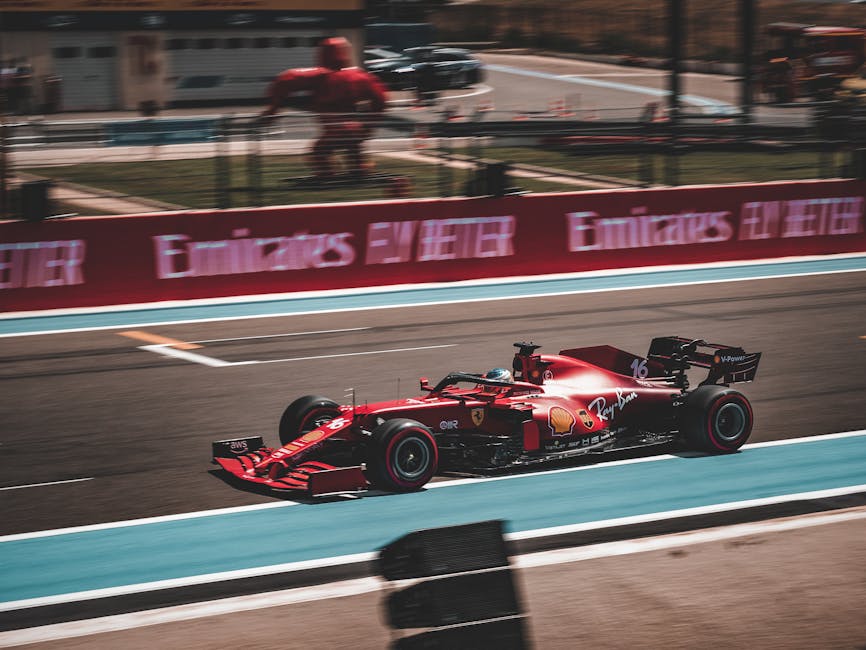
Nestled in the picturesque region of Le Castellet, France, Circuit Paul Ricard has been a leading destination for motorsport enthusiasts worldwide. Known for its unique design and cutting-edge facilities, this track offers a thrilling experience for motorcycle racers. As we move into 2025, mastering Circuit Paul Ricard has become a coveted goal for many riders. This guide will help you grasp essential tips and strategies to enhance your performance as you tackle this world-renowned circuit.
Understanding Circuit Paul Ricard
Circuit Paul Ricard boasts a variety of configurations, but the most popular motorcycle track layout extends over 3.8 miles with 15 turns. The track is revered for its long Mistral Straight, challenging corners, and wide run-off areas, making it a favorite for testing skills and achieving high speeds. With state-of-the-art facilities and a focus on safety, Paul Ricard is an ideal venue for both novice and seasoned riders looking to push their limits.
Preparation Before Hitting the Track
Know the Circuit Layout
Before you ride, familiarize yourself with the track layout. Understanding the nuances of each turn and the best lines to take is crucial. The 2025 Circuit Paul Ricard map is available online and can be utilized to study the key sections, such as the challenging Beausset and the technical Sainte Baume corners. Spend time analyzing videos of expert riders to observe their techniques and decision-making processes.
Optimize Your Motorcycle Setup
- Suspension: Adjust your suspension to balance stability and agility. Given the high-speed nature of the track, a firmer setup can help maintain control during fast sections.
- Tyres: Select the right tyre compounds suited for the temperature and track conditions. In 2025, advancements in tyre technology offer better grip and durability, but proper choice remains vital.
- Brakes: Ensure your brakes are in top condition, as the circuit demands responsive braking, particularly in the technical sections.
Physical and Mental Preparation
Riding at Circuit Paul Ricard is physically demanding. Strengthen your core and cardiovascular fitness to endure long sessions. Equally important is mental preparation. Visualize the track, practice concentration, and remain calm under pressure to enhance your performance.
Top On-Track Strategies
Cornering Techniques
Circuit Paul Ricard presents a mix of slow and fast corners. To master these, focus on late apexing in tighter turns to carry more speed into the exit. For faster bends like Signes, maintain a smooth throttle application and trust your leaning ability to maximize speed.
Mistral Straight Mastery
The Mistral Straight is one of the longest in any circuit, allowing significant speed build-up. It’s crucial to refine your aerodynamic position to minimize drag and optimize top speed. Tuck in close to your bike, ensuring that your helmet is down and your elbows are tucked in.
Braking Points
Accurate braking is key at Circuit Paul Ricard. Identify markers along the track to help judge your braking zones, especially for complex entries like the Courbe de Signes and the Verrerie chicane. Practice trail braking to maintain control while entering turns.
Weather Conditions
Track conditions can vary, with windy and hot weather being typical. Stay updated with the forecast and adapt your riding style accordingly. High temperatures can affect grip, so adjust tyre pressure if necessary to sustain performance.
Off-Track Considerations
Networking and Community
Engage with the vibrant motorcycle racing community at Circuit Paul Ricard. Networking with other riders and sharing insights can provide invaluable advice and camaraderie. Join forums and local clubs to stay connected with fellow enthusiasts.
Utilize the Facilities
The circuit offers excellent facilities, including garages, paddocks, and hospitality services. Make use of these amenities to ensure a comfortable and organized experience. The 2025 upgrades to the venue include enhanced pitlane technology and expanded viewing areas for spectators and teams alike.
Safety First
Adhering to safety protocols is paramount. Equip yourself with up-to-date protective gear, including a certified helmet, gloves, and leathers. Familiarize yourself with the track’s emergency protocols and flag signals. Safety should always be the top priority when racing.
Conclusion
Mastering Circuit Paul Ricard requires a strategic approach, balancing technical skills with comprehensive preparation. Whether you’re competing or just enjoying a track day, applying these expert tips will elevate your riding experience on this iconic circuit. Stay committed to honing your abilities, and remember that every session is an opportunity to learn and improve.
FAQ
Q: What is the best time of year to ride at Circuit Paul Ricard?
A: Spring and autumn offer the most favorable weather conditions, with moderate temperatures and less wind, making it ideal for motorcycle racing.
Q: How can I access Circuit Paul Ricard for a track day?
A: Visit the official Circuit Paul Ricard website to check the schedule and register for track days. Ensure your motorcycle meets the technical requirements set by the organizers.
Q: What should I do if I experience mechanical issues during a session?
A: If you encounter mechanical problems, signal your situation to marshals and safely exit the track. Utilize the on-site facilities and support services for assistance.
Q: Are there accommodation options near Circuit Paul Ricard?
A: Yes, the surrounding area offers a variety of accommodation options ranging from hotels to charming bed-and-breakfasts. Booking in advance is recommended.
Q: Can beginners participate in track days at Circuit Paul Ricard?
A: Absolutely! Track days are often segmented by skill levels, allowing beginners to gain experience in a safe and supportive environment.


